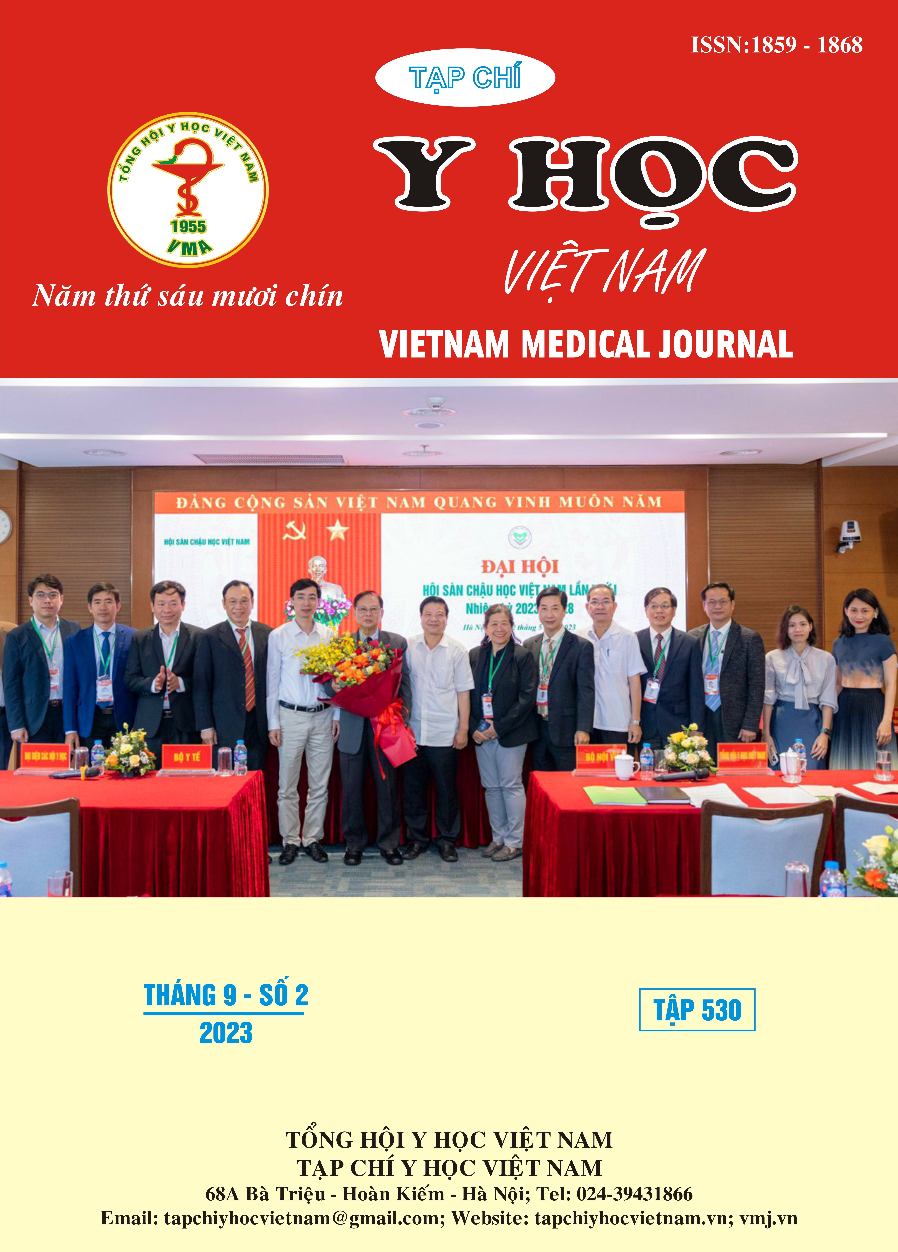RELATIONSHIP BETWEEN TREATMENT RESULTS AND MAGNETIC RESONANCE OF CEREBRAL VENOUS THROMBOSIS
Main Article Content
Abstract
Objective: Analyse the relationship between treatment results and magnetic resonance imaging of cerebral venous thrombosis. Subjects and methods: A prospective, descriptive study of 38 patients with cerebral venous thrombosis treated at the Department of Neurology, Bach Mai Hospital from March 2020 to June 2021. Results: The most common types of brain injury include ischemic stroke, accounting for 31.6% of cases, hemorrhagic stroke 21.1%, and hemorrhagic transformation 18.4%. The average hospital stay is 12.5 ± 7.6 days. There is no difference in the number of hospital days between patients with single sinus venous thrombosis and those with multiple sinus venous thrombosis. We also found that there was no correlation between the recovery status evaluated on the mRS scale of patients at discharge and after 12 weeks with the condition of brain tissue damage and the number of blood clots. Conclusion: On magnetic resonance imaging of patients with cerebral venous thrombosis, cerebral infarction is the most common (31.6%), hemorrhage and hemorrhagic transformation is less common, 21.1% and 18.4% respectively. There was no association between length of hospital stay and imaging findings. There was no relationship between the mRS score at discharge and the lesion on imaging
Article Details
Keywords
Cerebral venous thrombosis, treatment results, magnetic resonance imaging
References
2. P. C, Ferro J. M., Lindgren A. G., et al. Causes and Predictors of Death in Cerebral Venous Thrombosis. Stroke. 2005;36:1720-1725.
3. Trịnh Tiến Lực, Nghiên cứu đặc điểm lâm sàng và hình ảnh học của bệnh nhân huyết khối tĩnh mạch não Luận án Tiến sỹ y học, Đại học y hà nội. 2020;
4. Ferro, José M., et al. "Prognosis of cerebral vein and dural sinus thrombosis: results of the International Study on Cerebral Vein and Dural Sinus Thrombosis (ISCVT)." Stroke 35.3 (2004): 664-670.
5. Khealani BA, Wasay M, Saadah M, et al. Cerebral venous thrombosis: a descriptive multicenter study of patients in Pakistan and Middle East. Stroke. 2008;39(10):2707-2711.
6. Duman T, Uluduz D, Midi I, et al. A multicenter study of 1144 patients with cerebral venous thrombosis: the VENOST study. Journal of Stroke and Cerebrovascular Diseases. 2017;26(8):1848-1857.


